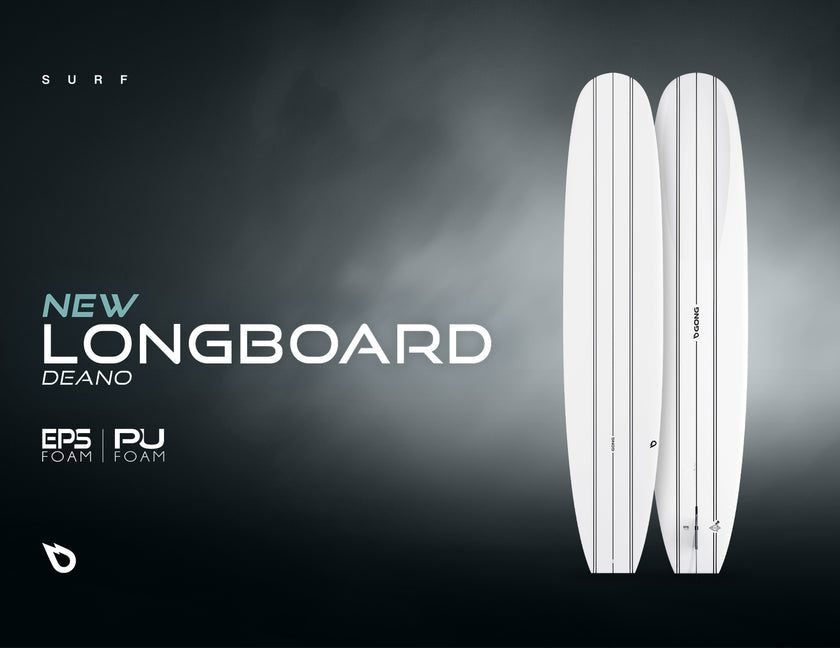
GEAR: THE NEW GONG LONGBOARD THAT CELEBRATES RETRO LINES
The post-retro concept of the Deano is an invitation to revisit all the longboard classics! Exploring the timeless repertoire of...
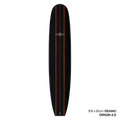
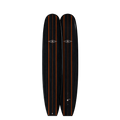
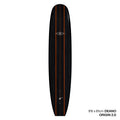
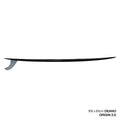
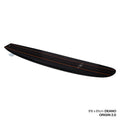
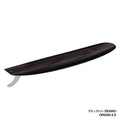
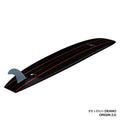

The shape for lovers of sharp, traditional longboards.
Looking to revisit all the classics of longboarding ? The Deano invites you to explore this timeless repertoire with finesse, performance and elegance.
Featuring excellent glide properties, this shape with thin rails and post retro lines is surprisingly maneuverable given its lift.
The Deano is more than just a reworking of existing lines, it takes the concept of a retro style of glide to a whole new level.
You can noseride, but without slowness. You can stall and pivot, but without heaviness. This is where the magic of this shape that glides in and on the water lies.
Flow is very often linked to a certain aesthetic of movement, to the way grace translates into actions to the rhythm of a wave.
Moving forward, gliding at the nose, moving backwards, turning … seamlessly, without altering the glide. This is a definition of flow, and that’s the technical aspect of this longboarding exercise. Giving the impression that you can move, place yourself and move again, effortlessly, without ever breaking the flow unless intentionally.
This is what the Deano offers, with totally relaxed surfing, a glide without resistance and optimum management of the natural speed of this shape. All you have to do is to place the board in the on the perfect line and let it do the job, flying over sections, doing nothing but enjoying the ride.
Ready to get rid of all the superfluous, all parasitic movements, to simply slow things down and get back to basics ? You’ll realize just how much the shape of a board can influence the way you surf, sometimes even dictate your style: that’s what the Deano is all about.
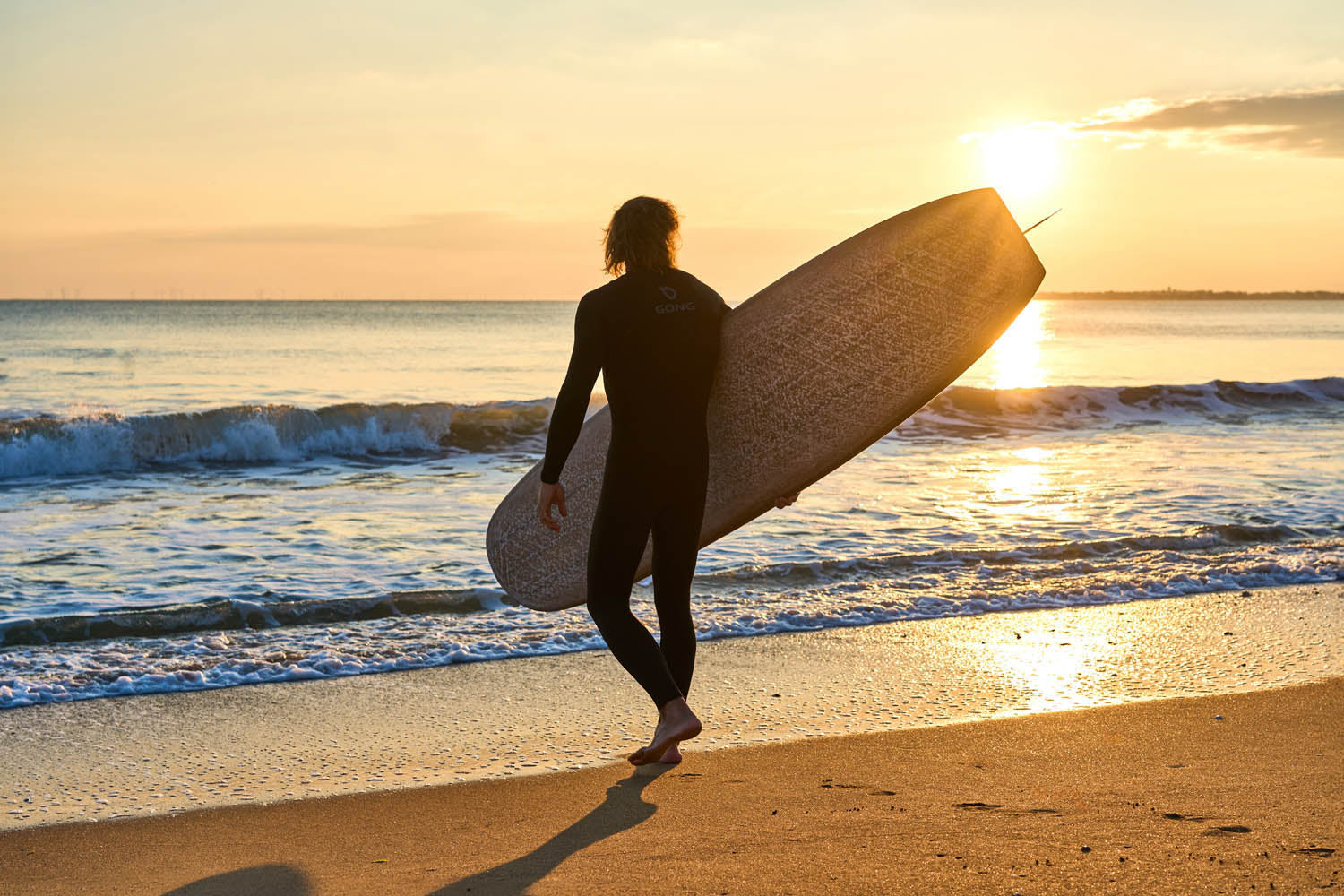
Its large outline at the tips and almost parallel shape makes it easy to hold on to the noses thanks to both the lift of the shape and its ability to load the tail with water so you can rock up on the front.
The overall surface area is large, making it easier to manœuvre and providing extra lift.
The length enables ultra-easy paddling and effortless placement.
The max width is centered for perfect control of your carves.
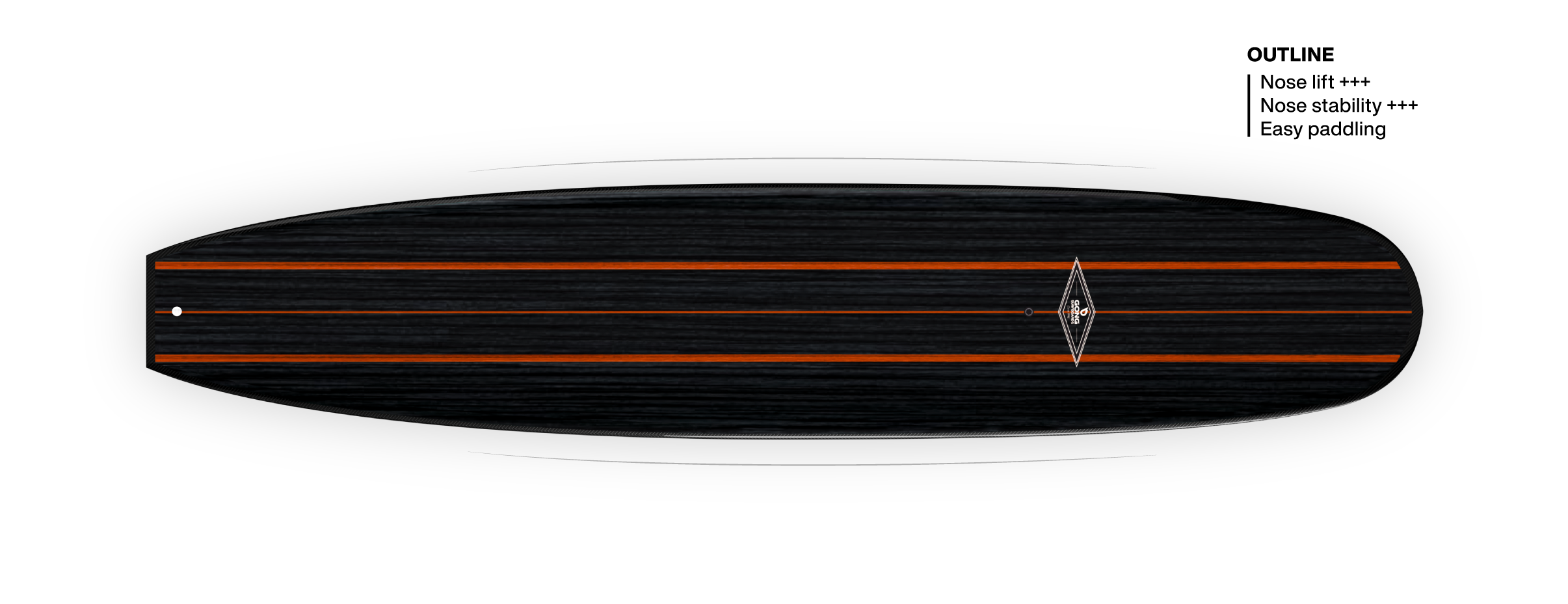
The rocker is tight for a smooth and pure glide. The large nose, associated with the slight front rocker provides great stability. The rocker at the tail is marked by a kick that gives extra leverage for dropknee turns and hard turns. But also helpful to stall, that crucial brake to get back into the rhythm of the breaking waves and get back to the nose.

The rails are 50/50 from nose to tail, very round and smooth. These rails create a sort of vacuum effect of the board on the wave. The board is held up and stays on its line, making it easier to hold on to the nose for longer.
The 50/50 rails are pinched at the tail for the best possible grip with this type of round rails. This finesse brings a high degree of precision and maneuverability.
The tail is a large square tail to improve lift when you’re at the back of the board, but also at the nose. This wide tail under the wave takes on water and optimizes tilting noserides. Its width stretches the outline and provides grip on the rails all the way to the tail. These sharp angles in the square tail bring a little more pivot in the turns.
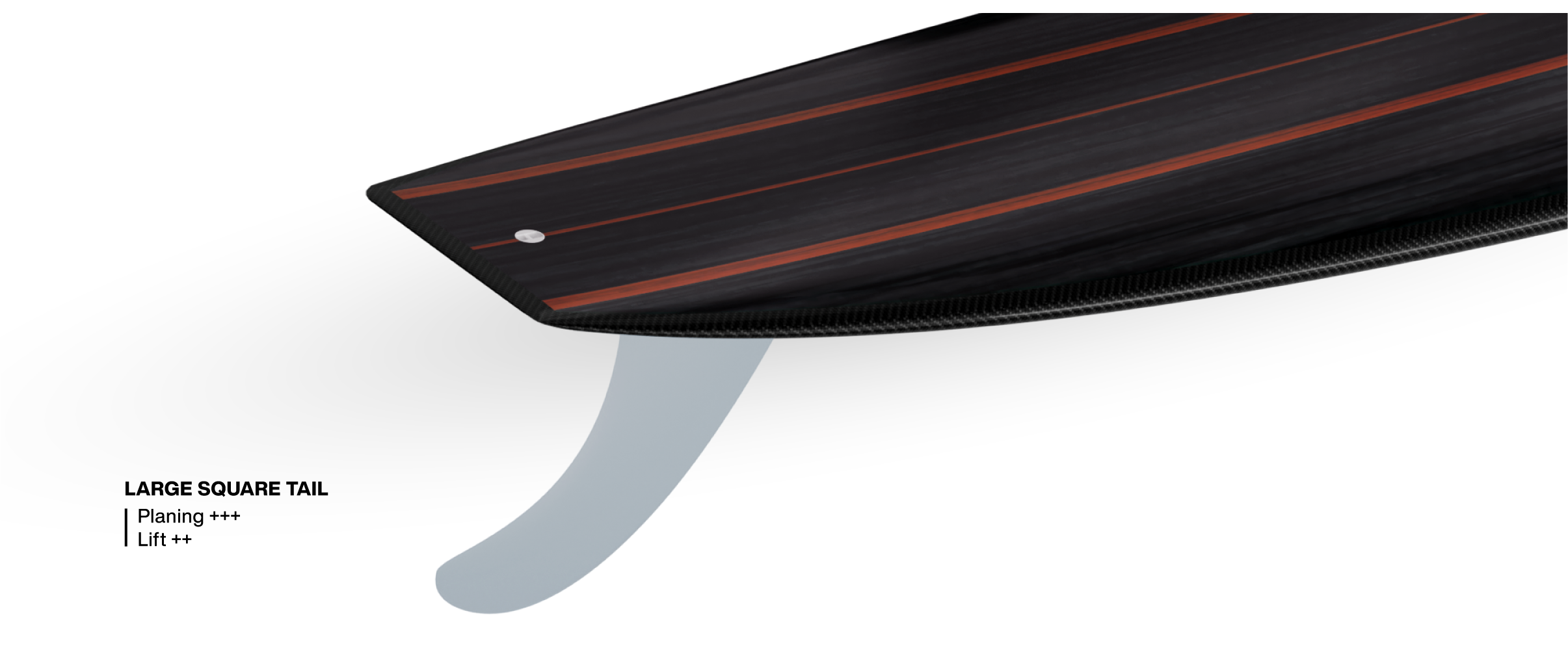
We have a pronounced spoon under the nose. This spoon is a concave shape, reminiscent of the hollow part of a spoon. Its purpose is to bring lift and control to the nose during noserides. You then have a slight V, which becomes increasingly pronounced around the tail to keep an excellent maneuverability, while ensuring a good rocker and smooth rail to rail.
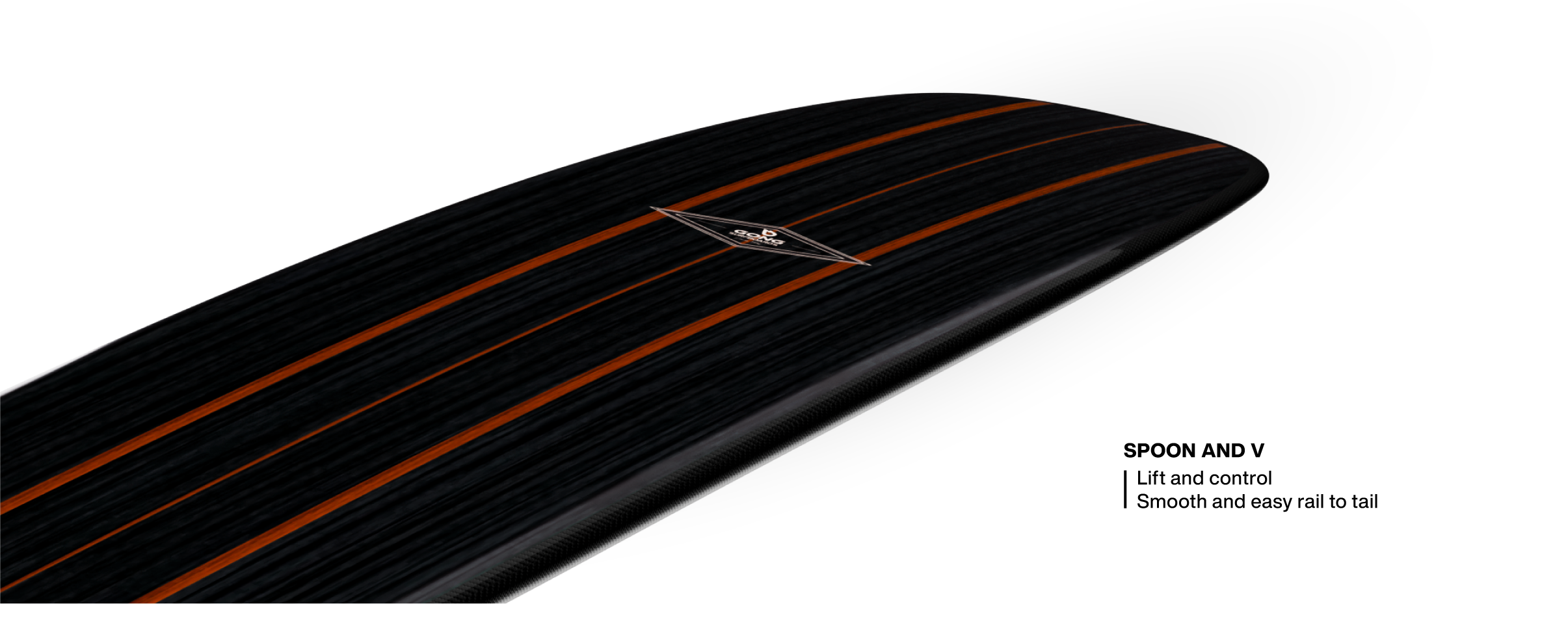
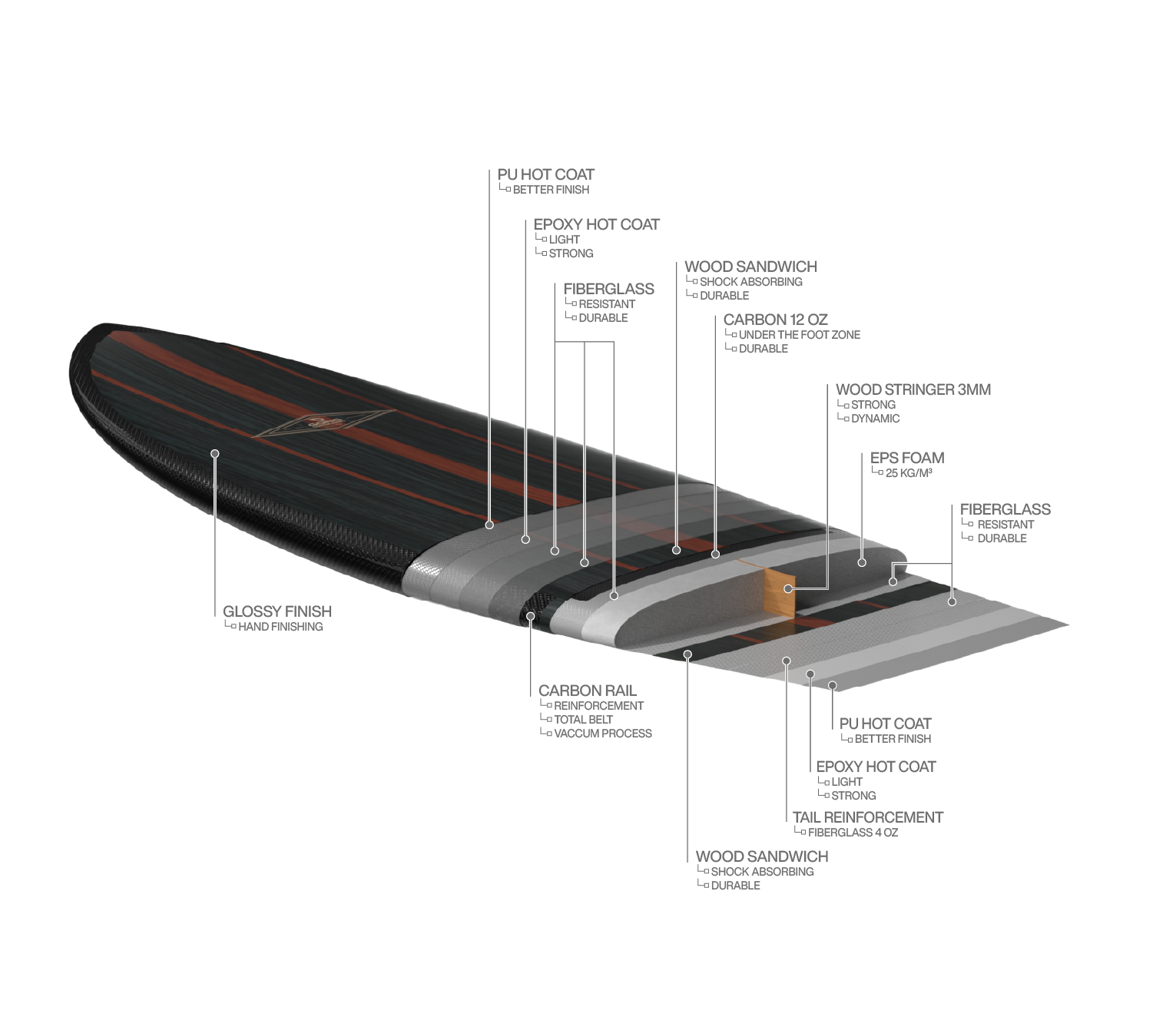
Technical sheet

Buying guide
For traditional longboarding aficionados.
This is also a way to embrace the entire surf culture.
Beginner surfers will find the Ten Blues more accessible and versatile.
A noserider is a must-have when you’re in a region where waves are often small and offer little power.
The classic elegance of a traditional longboard and the timeless beauty of a log, ideal for practicing dropknee turns, cross-steps and noserides.
The wider the board, the more stability and buoyancy you get, and the more easily you can stay in control on the nose. The wider the board, the more speed is affected. A narrow longboard will be better suited to lightweight surfers who will gain in maneuverability. A wider board will be more stable for a heavier surfer, who will be able to move easily without impacting the board’s glide.


Generally speaking, some fins favor noseriding, while others favor maneuverability or speed. With the Deano, we're looking to maximize the time spent on the nose, so we'll choose a fin with a lot of surface area.
A wide fin will help to stay for longer at the nose, as it will maintain the trajectory without skidding. The board will be more easily maintained on a high line in the section. The purpose of this type of fin is to maintain the line optimally. Speed will be limited, as will maneuverability and responsiveness. Big fins stall the board. But they also allow the surfer to over-act, because they offer resistance that you can play with.
A fin with less surface area will help you get up to speed with less drag. Being narrower, it will give more vivacity in the pivot but will make staying on the nose more tricky. The board will slide more easily when hanging ten in the pocket of the wave, but it will go faster and be more playful.
The distribution of the surface area will be a key factor.
The distribution of the surface area will be a key factor. A rectangular parallelepiped surface that is homogeneous over the entire depth will give a fin that is fairly blocked. This can be an interesting way of trying to counteract certain behaviors, but the potential is limited and the technical side is maximum.
A thin surface at the head and a strong surface at the base will free up the rail to rail. It's maneuverable and pleasant, but directional stability is poor.
A large surface area at the head will stabilise the board without any lateral effort (flat and straight) and will exaggerate the angles taken because the head will want to foil towards the surface of the water. When leaning sideways, when you're pushing into the board when you're across the wave, this is the type of fin that will react the most with acceleration. Handle with care, but this type of fin can be a booster for your board.
A large surface area at the head but not much at the base: it's extreme with amplified angles and low drag. Very unstable, and virtually unsurfable at high speed.
The depth also plays a key role. The deeper the fin, the reflect its shape. In general, a deeper fin will give you stability, whether you're moving towards the nose or wanting to stay there. Depth will help lock in the tail and keep you stable when you go to the nose. But too much depth and you'll get stuck or fall off.
The rake of the fin will also be an important factor. A straight fin is theoretically stable and fast, but not very maneuverable. A fin that is very curved backwards is very maneuverable and will make fewer mistakes, giving greater tolerance. A fin with some rake will give your turns more width, while a relatively straight fin will give more pivot.
A lightweight surfer will not need to oversize his fin, but can reduce the surface area to maintain maneuverability. A tall surfer, on the other hand, will be better off with a large fin to improve stability in the nose and ensure that he can get around.
To choose the size of your fin, a simple principle is that the size of the fin in inches is equal to the length of the board in feet. It's very simple but relatively simplistic, because this rule is mainly related to the surface area of the fin. A flex fin will generally have less effect, so a 10" fin with a small surface area may be suitable for a 9" longboard.
The position of the fin is also crucial. By moving it backwards, you gain stability and control, making it easier to cross-step. You gain in maneuverability by moving it forward, but lose stability. Be careful not to go against the grain by moving a fin that is not very maneuverable forward in order to make it more maneuverable. This game has a limit which leads to aberrant behavior when you go too far. So when the behavior doesn't suit you, move the fin no more than a few centimeters. If it still doesn't work, change the fin.
Which shape to choose?
Deano or Ten blues?
Those two longboards are almost the opposite, but designed for the same type of waves: a retro style for the classic noserider, the Deano, and a very modern, versatile style for the Ten Blues. The Ten blues is one of those modern shapes where the rear half of the board features a lot of shape elements borrowed from the world of shortboarding. With pinched rails and a pronounced edge, you get a great ability to relaunch and can put a lot of pressure underfoot, with the aim of making quick changes of direction. The tail is also thinner to give you more pivot and easy rail-to-rail without having to put a lot of pressure underfoot.
A shape like the Deano will paradoxically require anticipation and very subtle riding, with as little effort as possible. The Ten blues will tolerate a rougher, more 'unexpected' ride, and will be more forgiving to beginners, as well as being more versatile.
Deano or Pampa?
The Pampa will offer a wider range of use, while the Deano will offer a totally incomparable experience and glide at the nose. The Pampa offers a modern outline, but is closer to the Ten Blues in its more modern approach to surfing. If you want to ride top turns on the Pampa, no problem, but the Deano is not the board you need for that.
Deano or IT?
These are certainly the two shapes in the longboard range that have the most elements in common, starting with the program, small conditions and a common goal: spending as much time as possible at the nose. These are two shapes whose role is to get into the rhythm, at the same speed as the breaking wave. The IT is simply the extreme version of the nose rider for XXS waves.
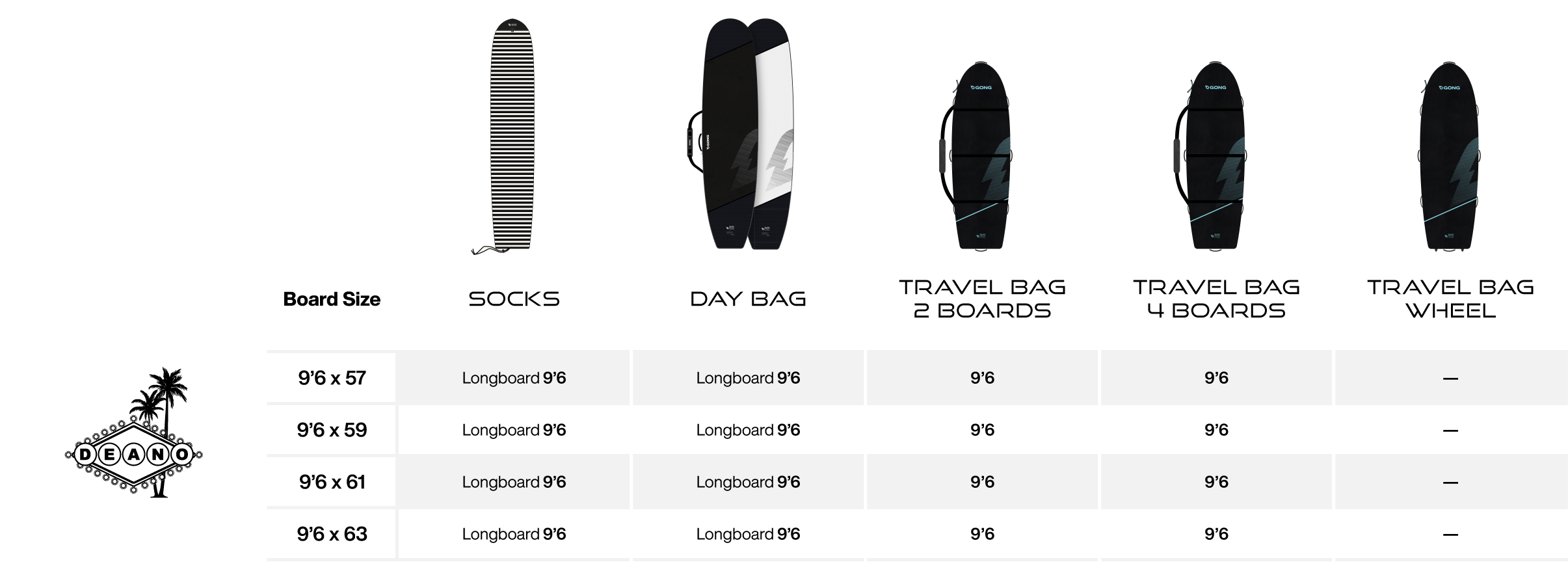
Equipments
Delivery
We indicate a preparation and shipping time of 3 working days. In reality, the majority of orders are shipped within 24/48 hours.
The delivery time, i.e. delivery time of the package to your home, then depends on the delivery location and the carrier.
We work with reliable and efficient carriers. 99% of shipments go perfectly and quickly. In the case of the remaining 1%, rest assured that we will do what is necessary with the carrier.
Unlike other sites, shipping costs are not hidden behind the price of our products. You know exactly what shipping costs you, and you are not disadvantaged if you choose to collect your order at our GONG Space Center.
Shipping costs are calculated based on the weight and volume of each package, and your delivery address.
Delivery tracking is managed directly by the carriers to whom we have entrusted your packages. They will contact you by email or SMS to allow you to choose delivery methods and follow the route of your package.
We work with the best transport societies to deliver to you throughout Europe and the world within very short deadlines. We chose them for their quality of service and their compliance with deadlines.
For mainland France, 80% of your orders arrive at their destination in less than 48 hours of processing.
For Europe, delivery times vary from 3 to 6 working days, depending on the country of destination.
For the rest of the world, delivery times depend on transit time and customs clearance time. This delay depends on customs and can last from a few days to a few weeks depending on the destination and seasonality.
Please note, transport time is added to preparation/shipping time. Two companies collaborate on your order (GONG and the carrier). Each one masters its activity and is committed to optimizing its deadlines so that you are delivered as quickly as possible and at a reasonable price.
Preserving the environment is an absolute priority. This is why we do everything possible to reduce our ecological footprint.
The most important thing is to sell quality, durable products that will be repairable and will please you for a long time.
For our shipments, we use:
Scotch craft paper.
Final packaging in high-end cardboard.
For rigid boards: Flexi-Hex, very high resistance ecological packaging.
This means:
Reusable and recyclable packaging.
An almost total reduction in single-use plastic.
Maximum protection and impact resistance for rigid boards thanks to the innovative Flexi-Hex honeycomb design (35mm thick).
Upon delivery, check the condition of your package in the presence of the carrier. A complete explanation email on the procedure to follow will be sent to you when your order is shipped.
Despite our requirements and all the care we take in the packaging and protection of your product, transport hazards may occur, and your product may suffer more or less significant transport damage.
Note that the products are protected in their carton. If you have any doubts, simply refuse delivery and contact us.
More infos
You can check the link below to ask all your questions about this product and read all the user feedbacks.
Everything you need to know about GONG SURF DEANO
The subject of the pad often comes down to an aesthetic choice for the look of your board. But what may seem artificial to non-pros is actually an invaluable aid.
Surfing is “the art of placement”, and that means you need to place your feet correctly on the board. What could be better than a sensory marker to know: “Ok, I’m at the sweet spot for this turn.”
Gluing proper pads is therefore essential. They’ll tell you whether your feet are in the right place or not. But you still need to stick them on properly, and here you can find everything.
Read our How To : PLACE A TAIL PAD